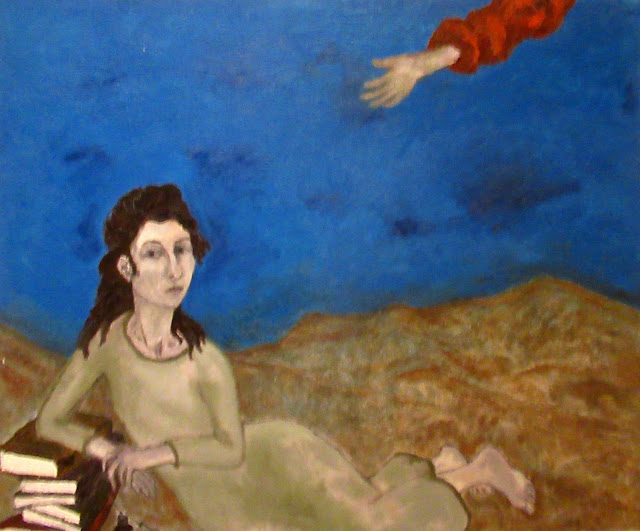The works in this post were made in the last decade, during a time of a succession of crises, ruptures and social justice movements in Britain and the world. These include the Brexit referendum, the Covid-19 pandemic, the cost-of-living crisis, the election of Donald Trump, Black Lives Matter, the #Metoo movement, the Russian invasion of Afghanistan. Life today is increasingly shaped by the influence of digital technology, social media and the rise of AI. We continue to struggle with the planet-wide impact of the climate emergency.
Some of the artworks in this post allude to these critical events while others open up spaces for broader reflections concerning community, difference and autonomy.
Himid reimagines a historic work in the Tate's collection - James Tissot's The Gallery of the MHS Calcutta painted about 1876. In the original Tissot depicts three white figures: a naval officer flirting with a young woman, with another woman standing between them. Himid reworks the painting to focus on two black women instead. They appear deep in thought as they gaze out to sea.
This photograph captures a stretch of the Atlantic Ocean from the end of a pier in Porto, Portugal. The sea is dark, its surface agitated. This, combined with the imposing scale of the work, gives the work a feeling of foreboding. The title is a reference to global political tensions. It speaks to Brexit, the migration crisis, and the rising global sea levels caused by the climate emergency.
Oscar Murillo, Manifestation, 2019-2020, (oil, oil stick, cotton thread, and graphite on danvas, velvet and linen)
Murillo made this painting during lockdown. The title refers to a process of becoming, and to the world's association with protest or demonstration in several languages. He flooded the surface of the canvas with oil paint and pigment, as an exploration of 'mark-making in its purest form'. Its thick marks and vibrant colours suggest turmoil and unrest. Instead of using paint to create an illusion, Murillo is interested in using paint as a 'factual thing, almost as a material and physical tool'.
Partou Zia, 40 Nights and 40 Days, 2008, (oil on canvas)
A self-portrait. The work's title alludes to geligious tales of isolation and endurance, such as the 40 days and nights that Jesus spent fasting alone in the desert. Zia painted this work in the last few months before she died. A hand reaches down from the top right corner, perhaps guiding her into the next life.
Kudzanai-Violet Hwami, 2021, (oil, acrylic, oil stick and silkscreen on canvas)
A self-portrait and a 'visual letter to the self'. Drawing on images from the internet and personal family archives, Hwami uses collage to explore identity in the post-digital age. 'I think I am seeking freedom', she says. 'Collage making, which is a process I use to create a picture, has given me absolute freedom as a strategy to overcome dis-ease. There are moments within history and our current time which are inescapable, and I think I want to give myself a moment to escape'.






No comments:
Post a Comment